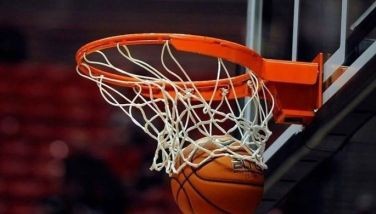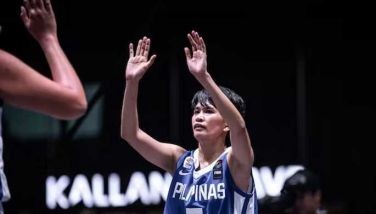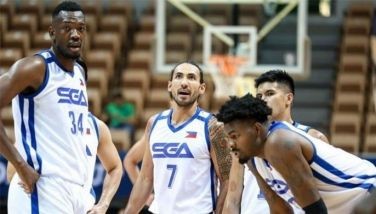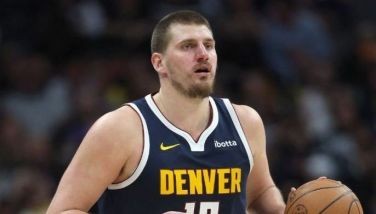FIBA World Cup: Still appealing?
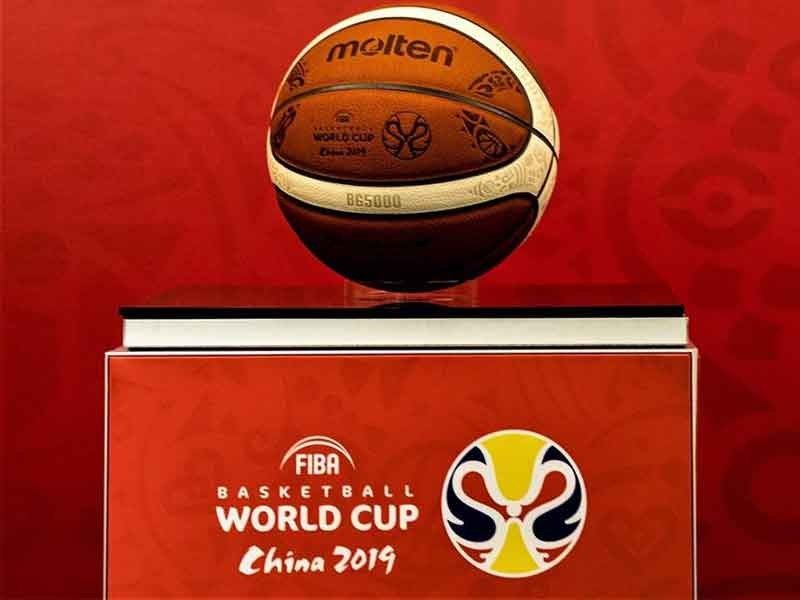
FIBA’s new format is trying to make its showcase event a ‘global’ spectacle. Players, leagues may not be buying it.
(Editor's note: The following article has been published on Aug. 27, 2019 in The Filipino connection and has been posted here with permission.)
For countries below the global basketball ladder, the sport’s “world cup” is excitement. It’s a thrill for them to slug it out against better-skilled teams.
And the players from a country that is already way, way up? It’s risky playing there.
This mindset, plus strokes of bad luck that hit the world’s best players and managerial concerns by basketball leagues to sustain patriotic commitments, may dampen the fan attraction of the 2019 FIBA World Cup in China. The pilot test to make basketball’s world cup as feverish as football’s is now feeling birth pains and swallowing hard lessons.
Admittedly, basketball talent is super skewed to favor the United States. Genetic- and race-induced athleticism are in the Americans’ favor. Foreign-born players only make up at least 24.5 percent of today’s National Basketball Association.
Hard 'lessons'
The NBA is the reputed “world championship,” the sport’s center of gravity. And that American league is the axis that can tilt this new experiment by the Fédération Internationale de Basketball to success.
There are other axes — all American-born, missing in China: LeBron James. Kevin Durant. Klay Thompson. Steph Curry. James Harden. Russell Westbrook. Kyrie Irving. Kawhi Leonard. Anthony Davis. Paul George. Damian Lillard. Demar DeRozan. Draymond Green. Kevin Love.
Most of their decisions are because of the first hard lesson hitting the August 31-September 15 joust: China’s a month to go before the NBA’s October 22 start. The FIBA World Cup is not worth the risk.
The NBA — its global mileage, its better competitive feel, and its million-dollar earning opportunities — is worth a cager’s gamble.
(The 2002, 2006, 2010 and 2014 editions of FIBA’s showcase event all ended at least six weeks before the start of those years’ NBA seasons.)
Heading back up
Individual players have widened the talent gap for basketball. But not when players are agglomerated into countries: That gap has long narrowed.
The Americans felt that before, even when their cagers were the best: Sixth place at the 2002 World Championships (hosted by the US). Three losses — to Puerto Rico, Lithuania and Argentina — at the 2004 Athens Olympic Games, despite winning the bronze medal. Getting another bronze at the 2006 World Championships, which happened after the James-led Americans lost a 12-point lead to eventual silver medalists Greece in the semifinals.
This five-year global humiliation led USA Basketball to revamp its program, summon winning US NCAA coach Mike Krzyzewski, and bring the NBA’s best back.
Kobe Bryant, Carmelo Anthony and James led the American rampage at the 2008 and 2012 Olympiads. Durant joined the fray in London 2012, but not after he and Curry steered the Americans to gold at the 2010 FIBA World Championships in Turkey. Curry, Harden and Irving dazzled to bring home another world championship for the US in 2014 (the year FIBA renamed the Spain-hosted meet as the “FIBA World Cup”).
So the global conditioning of fans’ mindsets to basketball dominance is fixated with the superstar Americans. FIBA’s marketing went on a high.
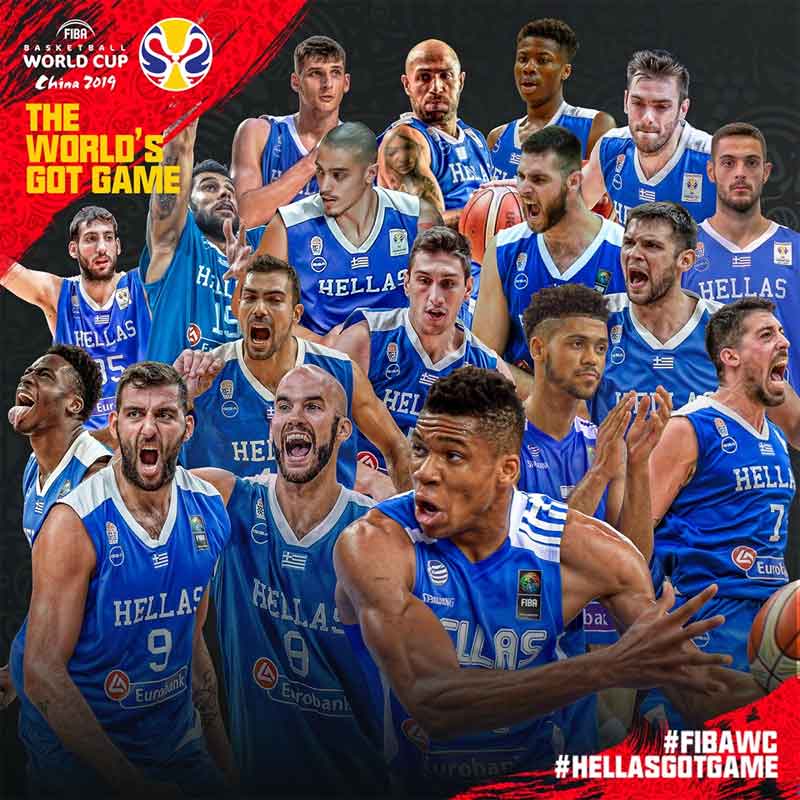 A rag-tag, ‘C’ level United States team may not retain the World Cup title for the Americans. Greece, led by new NBA MVP Giannis Antetokounmpo, lurks as a legitimate title contender. FIBA
A rag-tag, ‘C’ level United States team may not retain the World Cup title for the Americans. Greece, led by new NBA MVP Giannis Antetokounmpo, lurks as a legitimate title contender. FIBALuckily, the China joust will have its own NBA stars: Newly-minted MVP Giannis Antetokounmpo (Greece), 2019 All-Star Nikola Jokic (Serbia), two-time Defensive Player of the Year Rudy Gobert (France), and new NBA World Champion Marc Gasol (Spain). Their European homelands brought their best with them, including their current and former NBA stalwarts.
Serbia, the US, Spain, Greece, Lithuania, France and Australia will crowd the medal race. But whoever’s the new FIBA World Cup champion will feel a hollow victory: the Americans’ “best,” those high-flying beasts on the hardcourt, snubbed China. FIBA may be the loser in the end.
Hang-ups and tussles
The new World Cup format, including qualification matches spanning a two-year window, is FIBA’s way to “avoid clashing with other major sporting events.” The “new system… is “more player-friendly and easier for fans to understand” (says its website).
Playing every summer for FIBA tournaments after club competitions sees players getting tuckered out. That is one of eight reasons FIBA changed the World Cup format — the “new era for basketball.”
Another one of those reasons, or issues, is this: “Future participation of the best players in national team flagship competitions (is) questionable.” This still holds true, under FIBA’s new experiment.
The Federation was at loggerheads with EuroLeague Commercial Assets (ECA) when the EuroLeague’s 2017-2018 season calendar did not accommodate the November 2017 and February 2018 qualifying windows. Thus the best EuroLeague (and well, NBA) players didn’t play.
Under this new World Cup format, FIBA wanted to “have the regular and consistent presence and traction throughout the year” by national teams that are “paramount to the global development of basketball.”
Meanwhile, the NBA can’t be disturbed. FIBA knows it: “The NBA has welcomed the New Competition System and Calendar and supports it… As the number one basketball league in the world, the NBA cannot be treated as if it were any other league… The NBA is a $7.5 billion business venture annually.”
“The absence of NBA players during two of the windows will offer opportunities for other talented players to shine for their national teams and, as a result, develop a whole new generation of basketball stars.” (The NBA has a G League, the farm league that deployed 50 players during the FIBA Americas qualification windows.)
Compare the NBA with the EuroLeague. FIBA tussled with ECA for not allowing the latter’s players for the qualifying windows — for just two playing days — amid a previous agreement. (The new World Cup format and calendar was approved by FIBA in 2014 “after a global consultation process.”)
ECA, on September 2017, suggested a four-week FIBA competition schedule so that players can don the national colors. ECA then lengthened the season to 38 weeks, from 31. The add-on item is that the FIBA World Cup should be held in July 2019, not this coming August 31-September 15.
That ECA proposal “is simply not serious and therefore unacceptable,” FIBA retorted. All the ECA had to do, FIBA thinks, is “reschedule just two game-days of the regular season in order to solve a problem it created itself.”
“This [FIBA’s rescheduling suggestion] is not difficult at all.”
Holding on
The impasse may be linked to how European basketball is managed which, as the consulting firm European Basketball Advisory Group saw, “is not efficient,” “not sustainable” and “not fair” for basketball players.
Europe has four continent-wide competitions “running in parallel,” writes consultant Cem Karamürsel for the EB Advisory Group. For example, the lack of coordination efforts between and among European leagues makes these leagues target fragmented markets, confusing basketball fans.
Thus, teams bear high operational costs but the situation “does not (and cannot) lead to an optimal return on investment given the limited demand of individual competitions and the sub-optimal way of addressing their growth,” Karamürsel wrote.
The tussle between FIBA and the EuroLeague may also be financial in nature. The bottomline targets are basketball fans and prospective tournament sponsors, but both sectors may have been confused by these multiple, overlapping tournaments.
Players committed to these club competitions and to FIBA’s tournaments will simply tucker out. Adding two national team windows into the FIBA World Cup qualifying format back-to-back with a EuroLeague that scheduled [at least] 30 regular game days “escalated the issue to a level that it can become a serious threat to players’ well-being, health and form levels.”
“Federations find themselves in a very difficult position in terms of supporting the leading clubs in their countries, while trying to find a right balance between the other teams as well as optimizing national team success,” Karamürsel wrote in a 2017 presentation titled FIBA vs EuroLeague: What is in the best interest of European basketball?
Leagues worldwide, including the Philippine Basketball Association, are perplexed adjusting their calendars with FIBA’s. Look at the PBA: A recent import-laden conference just finished. The World Cup’s two weeks after that conference. There’s no rest for the weary, particularly for three shoo-ins to the Philippine team.
FIBA’s reasoning to rest players and prepare them better for the Federation’s tournaments boomeranged.
“FIBA’s decision to schedule qualifying rounds for the national teams during (the) regular season created a significant conflict for the competition calendar,” Karamürsel wrote. That may be the third hard lesson of this new FIBA World Cup experiment.
Hardline stances?
The new FIBA calendar cycle includes the 2020 Tokyo Olympics and the 2021 continental cups. The Olympics is the go-to “world basketball spectacle” for the NBA’s best. Ask Kobe and LeBron, or Australia’s current best player Ben Simmons.
FIBA will accept suggestions to improve scheduling after 2021. Next up is 2023 with another FIBA World Cup edition, which the Philippines will mainly co-host with Japan and (provisional co-host) Indonesia.
As of this writing, FIBA has not formally announced any dates for 2023. ECA suggested a July World Cup schedule; an idea for 2023 perhaps?
If the ongoing developments from this forthcoming FIBA World Cup are an indication, these threaten the allure of the 2023 FIBA World Cup. Low-tier basketball nations will still go agog for that “world cup,” but maybe not the world’s best players. Crazed global hoops fans who are eager to watch the world’s best may just have to cheer for whoever’s fighting for flag and country.
The NBA cannot be easily nudged. The EuroLeague’s not giving in. And FIBA: will it budge?
- Latest
- Trending















